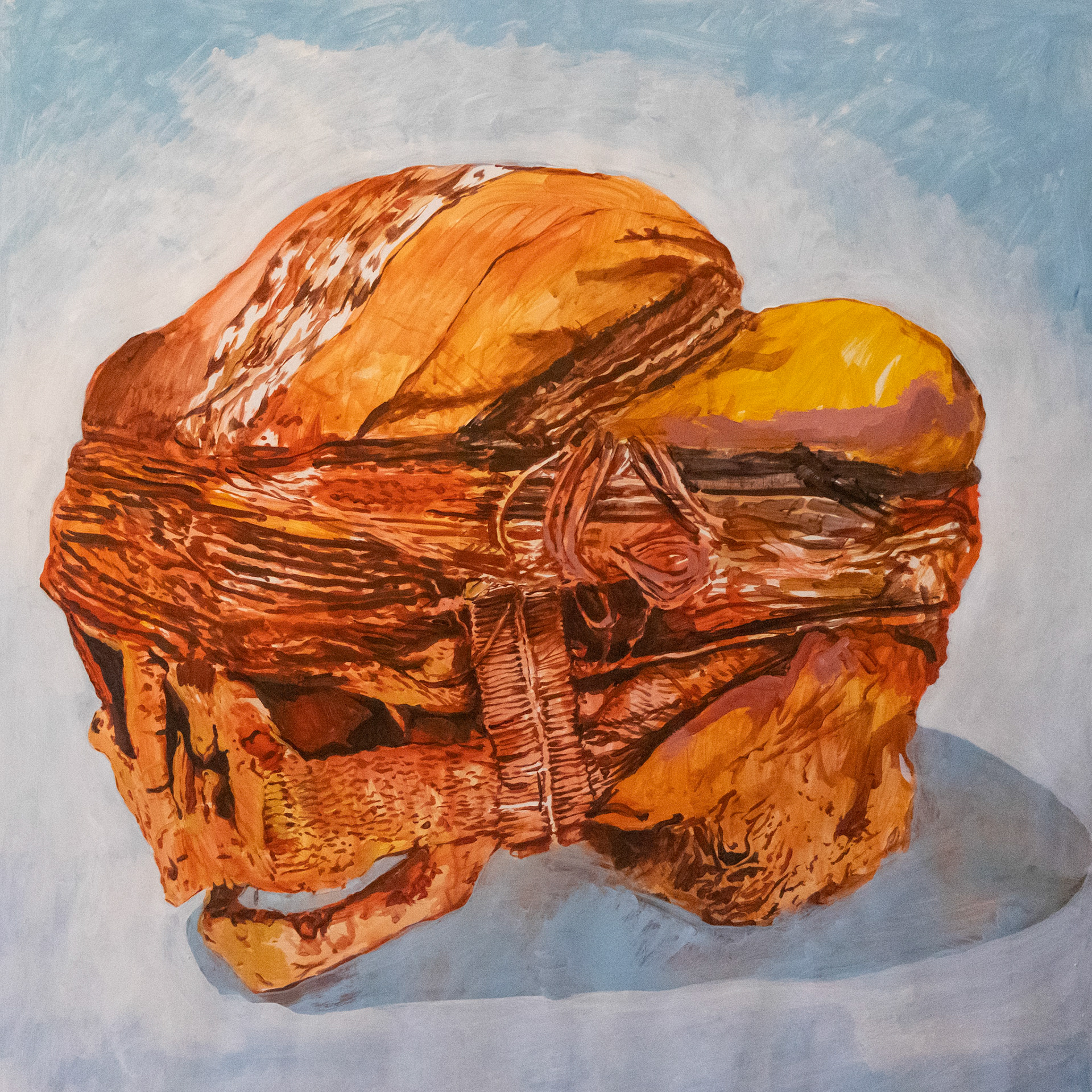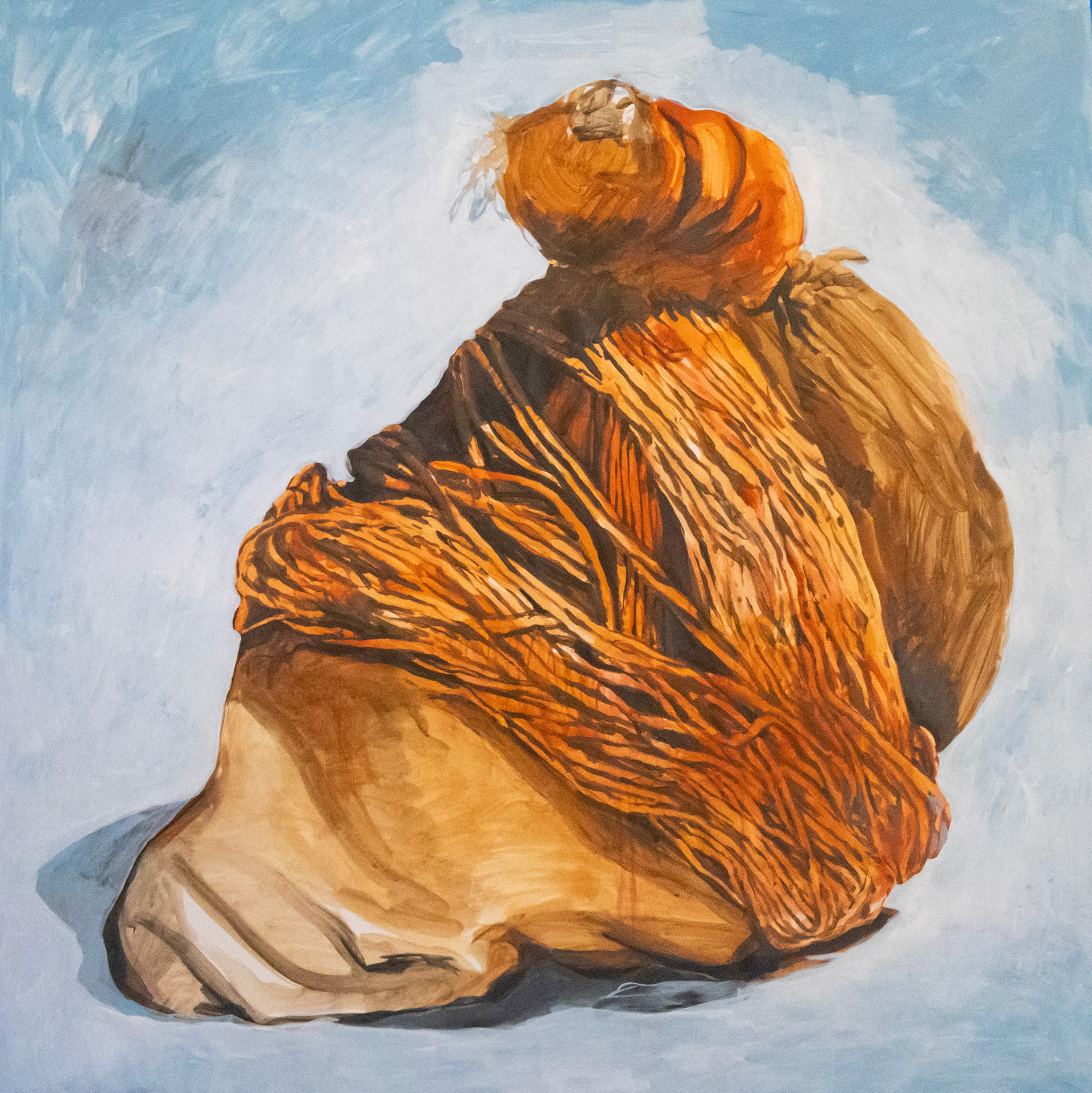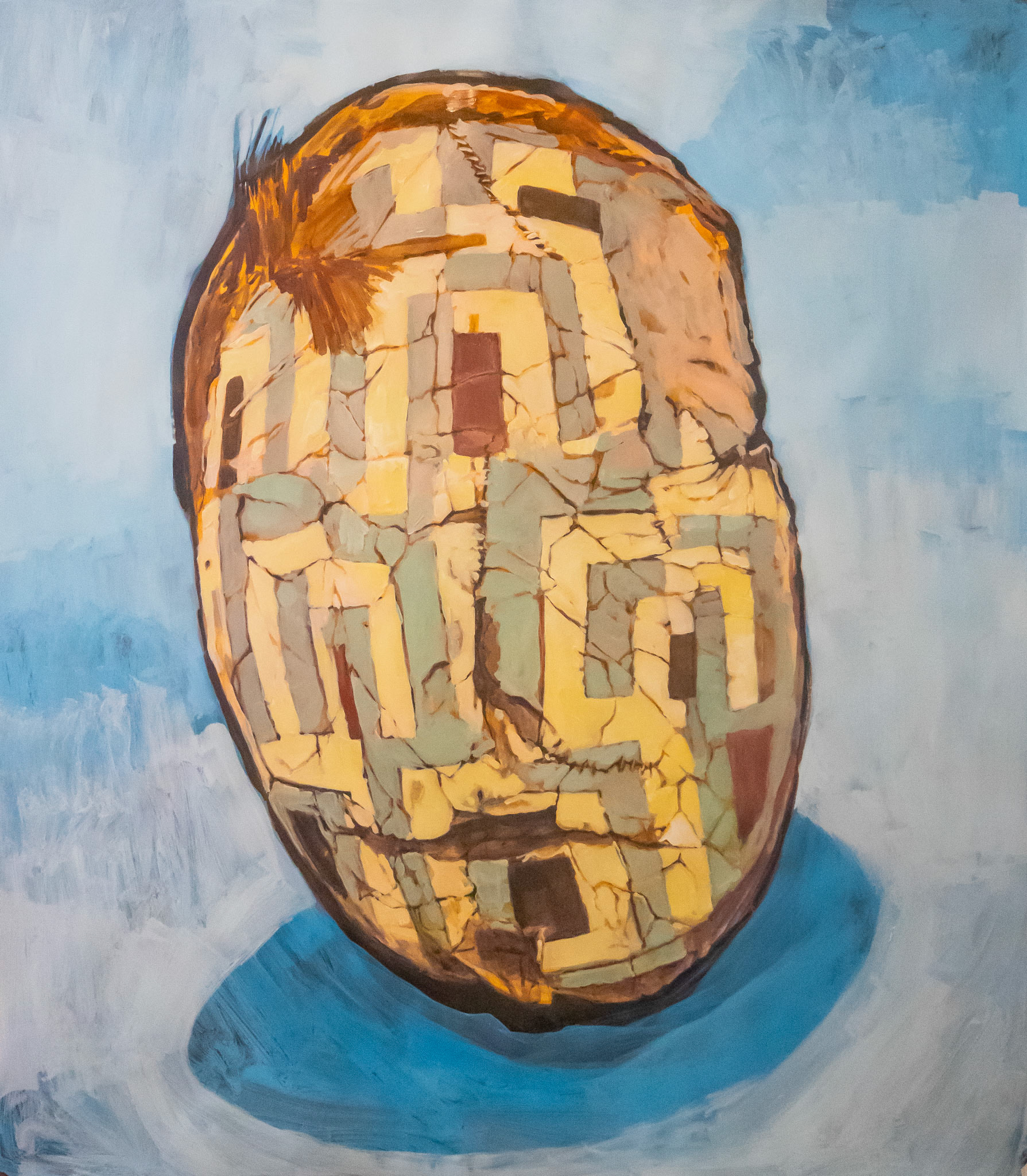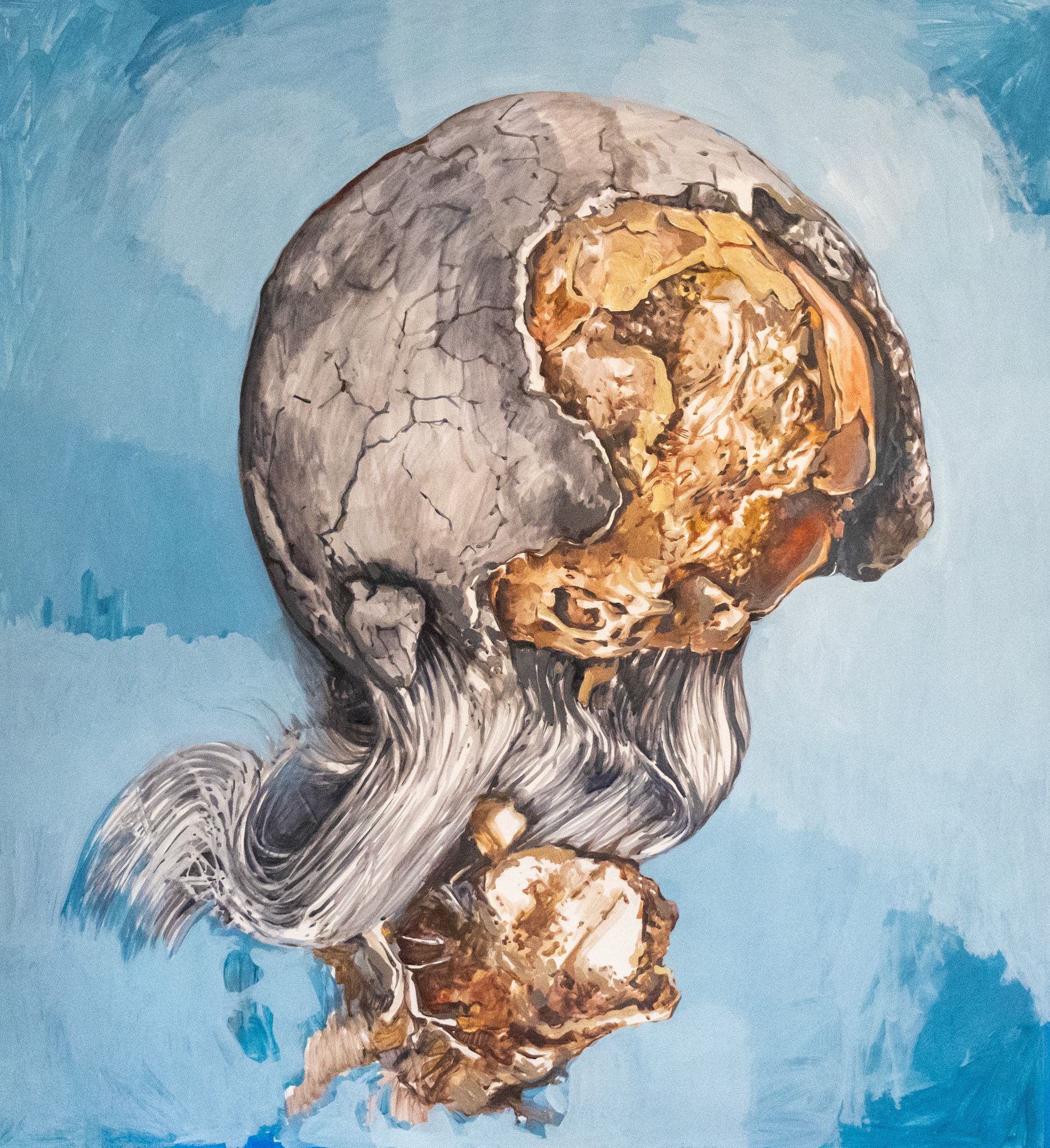2023
ES
"Desde sus primeros trabajos, la pintura ha sido el principal lenguaje a través del que Sebastián Riffo Valdebenito ha desarrollado su universo autoral. Siguiendo fuertes hilos intuitivos, ha transitado por imaginarios donde la conmoción y los afectos se entretejen con lo real, con el territorio y con la historia.
Abismos ancestrales es una serie de pinturas que nacen de un llamado subterráneo. Una vuelta a un lenguaje pictórico con todos sus elementos y desafíos sustanciales. La pintura valiéndose de sí para transmitir una frecuencia muda, indescifrable.
Las razones por las que la Cultura Chinchorro conservaba los cuerpos de los miembros de su comunidad que dejaban esta vida hasta hoy son un misterio. Por qué no se deshacían de ellos, por qué no los enterraban, al menos no a todos, por qué rellenaban sus cuerpos con madera y les ponían máscaras con conchitas pintadas. Se sabe que eran pescadores. Tampoco hay certezas de por qué dejaron de hacer lo que hoy se denomina como momificación artificial. Se atribuyen razones religiosas.
Sebastián Riffo Valdebenito propone un acercamiento sensitivo, visual, a estos seres humanos de los que se piensa vivieron entre 7.020 y el 1.500 a.C., en lo que hace noventa y cuatro años conocemos como costa chilena de Arica. Abismos ancestrales responde a la imposibilidad de tener una respuesta clara, racional, innecesaria quizás, más no prescindible sobre esta cultura. Construye una conexión a través de imágenes de vestigios de momias y artefactos ancestrales, de su silencio y su comunicación incuestionable, intraducible, antes y más allá del verbo.
Las pinturas que componen esta exposición reinterpretan y nos transmiten una vibración a través de la luz, el color, el trazo y la mancha. Posibilitan una aproximación a una cultura con la que nos hermana un territorio, en un lenguaje contemporáneo que podemos más que reconocer, sentir".
Naomi Orellana
EN
"Since his earliest works, painting has been the primary language through which Sebastián Riffo Valdebenito has developed his authorial universe. Following strong intuitive threads, he has traversed imaginaries where upheaval and affections intertwine with the real, with the territory, and with history.
"Abismos ancestrales" is a series of paintings born from an underground calling—a return to a pictorial language with all its elements and substantial challenges. Painting relies on itself to convey a mute, indiscernible frequency.
The reasons why the Chinchorro Culture preserved the bodies of their community members who departed this life until today remain a mystery. Why they did not dispose of them, why they did not bury them, at least not all of them, why they filled their bodies with wood and adorned them with masks adorned with painted shells. It is known that they were fishermen. There are no certainties either as to why they ceased what is now referred to as artificial mummification. Religious reasons are attributed to it.
Sebastián Riffo Valdebenito proposes a sensitive, visual approach to these human beings who are thought to have lived between 7,020 and 1,500 B.C., in what ninety-four years ago we knew as the Chilean coast of Arica. "Abismos ancestrales" responds to the impossibility of having a clear, rational, perhaps unnecessary, yet indispensable answer about this culture. It builds a connection through images of mummy remains and ancestral artifacts, of their silence and their unquestionable, untranslatable communication, before and beyond the word.
The paintings comprising this exhibition reinterpret and transmit a vibration through light, color, line, and stain. They enable an approach to a culture with which we share a territory, in a contemporary language that we can not only recognize but also feel".
Naomi Orellana




